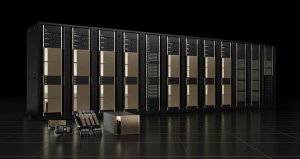Embedded analytics will drive smarter decisions, says Pentaho: 2015 Tech Predictions
In 2015, Big Data will meet the “Big Blender” where unstructured data will blend with more traditional, relational data; Big Data will transform traditional industrial businesses, and business users will increasingly consume analytics embedded within applications to drive smarter decisions. This is all according to Quentin Gallivan, Chairman and CEO of Pentaho, an open-source provider of reporting, analysis, dashboard, data mining and workflow capabilities software.
Gallivan’s predictions about Big Data are all part of our second annual Technology Predictions series in which industry experts share their predictions with us about the hot tech trends that they think will take center stage in 2015. We’ll be sharing all of their predictions with you over the next couple of weeks. Read on for more predictions from Gallivan (which were originally posted on his blog here). Edited and reprinted below with permission.
![]()
.
.
Prediction No. 1: Businesses will seek even more power to explore data freely
Moving into 2015, and fired up by their initial Big Data bounties, businesses will seek even more power to explore data freely, structure their own data blends, and gain profitable insights faster. They know “there’s gold in them hills” and they want to mine for even more.
.
Prediction No. 2: Big Data will meet the “Big Blender”
The digital universe is exploding at a rate that even Carl Sagan might struggle to articulate. Analysts believe it’s doubling every year but with the unstructured component doubling every three months. By 2025, International Data Corporation (IDC) estimates that 40 percent of the digital universe will be generated by machine data and devices, while unstructured data is getting all the headlines. The return on investment (ROI) business use cases we’ve seen require the blending of unstructured data with more traditional, relational data. This blending will start to happen in 2015.
For example, one of the most common use cases we are helping companies create is a 360 degree view of their customers. The de facto reference architecture involves the blending of relational/transactional data detailing what the customer has bought with unstructured weblog and click-stream data, highlighting customer behavior patterns around what they might buy in the future.
This blended data set is further mashed up with social media data describing sentiment around the company’s products and customer demographics. This “Big Blend” is fed into recommendation platforms to drive higher conversion rates, increase sales and improve customer engagement. This “blended data” approach is fundamental to other popular Big Data use cases such as the Internet of Things, security and intelligence applications, supply chain management, and regulatory and compliance demands in Financial Services, Healthcare, and Telco industries. This blended data approach will gain traction in 2015.
.
Prediction No. 3: The Internet of Things will fuel the new “Industrial Internet”
Early Big Data adoption drove the birth of new business models at many companies. In 2015, I’m convinced that we’ll see Big Data starting to transform traditional industrial businesses by delivering operational, strategic and competitive advantage. Germany, for example, is running an ambitious Industry 4.0 project to create Smart Factories that are flexible, resource-efficient, ergonomic, and integrated with customers and business partners.
The machine data generated from sensors and devices are fueling key opportunities such as Smart Homes, Smart Cities and Smart Medicine—which all require Big Data analytics. Much like the “Industrial Internet” movement in the U.S., Industry 4.0 is being defined by the Internet of Things. According to Wikibon’s David Floyer, the value of efficiency from machine data could reach close to $1.3 trillion and will drive $514 billion in IT spend by 2020. The bottlenecks are challenges related to data security and governance, data silos and systems integration.
.
Prediction No. 4: Big Data will run in the cloud in 2015
As companies with huge data volumes seek to operate in more elastic environments, we’re going to see some running all of (or a part of) their Big Data infrastructures in the cloud. This says to me that the cloud is now “IT-approved” as a safe, secure and flexible data host.
To give an example, in a recent company meeting two enterprise customers in highly-regulated industries started one-upping each other about how much data they stored in Amazon Redshift Cloud. One shared that they processed and analyzed five to seven billion records daily. The next shared that they stored a half petabyte of new data every day, and on top of that, they had to hold the data for seven years while still making it available for quick analysis. Both of these customers are held to the highest standards for data governance and compliance. Regardless of who won, the forecast for their Big Data environments is the cloud.
.
Prediction No. 5: Embedded analytics will be the new business intelligence
Classic business intelligence (BI) involves a business analyst looking at data with a separate tool outside the flow of the business application. Although classic BI will be around for a while, a new wave will rise in which business users will increasingly consume analytics embedded within applications to drive faster, smarter decisions. Gartner Inc.’s latest research estimates that more than half of the enterprises that use BI now use embedded analytics. I have no doubt that this trend will continue to bear out in 2015.
As classic BI matured, we witnessed a final “tsunami” in which data visualization and self-service inspired business people to imagine the potential for advanced analytics. Users could finally see all their data—warts and all—and also start to experiment with rudimentary blending techniques. Self-service and data visualization prepared the market for embedded analytics—what I firmly expect to be the most significant analytics trend in 2015.
.
Prediction No. 6: Data Refineries will give real power to the people
The Big Data stakes are higher than ever before. No longer just about quantifying “virtual” assets such as sentiment and preference, analytics will start to inform how we manage physical assets such as inventory, machines and energy. This means companies must, and will, turn their focus in 2015 to the traditional Extract, Transform and Load (ETL) processes that result in safe, clean and trustworthy data.
However, for the types of ROI use cases we’re talking about today, this traditional IT process needs to be made fast, easy, highly-scalable, cloud-friendly and accessible to business. And this has been a stumbling block, until now. In 2015, companies will introduce Big Data innovations that effectively bring the power of governed data delivery to “the people,” unlocking Big Data’s full operational potential.
.
.
2015 Technology Predictions graphic courtesy of SiliconANGLE
A message from John Furrier, co-founder of SiliconANGLE:
Your vote of support is important to us and it helps us keep the content FREE.
One click below supports our mission to provide free, deep, and relevant content.
Join our community on YouTube
Join the community that includes more than 15,000 #CubeAlumni experts, including Amazon.com CEO Andy Jassy, Dell Technologies founder and CEO Michael Dell, Intel CEO Pat Gelsinger, and many more luminaries and experts.
THANK YOU















